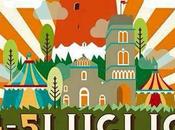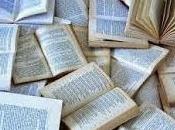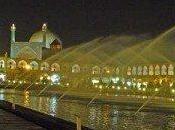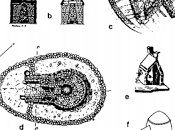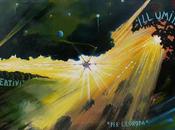
Writer and photographer Philippe Bordas began his African experience in 1988, sharing the everyday lives of Kenyan boxers in Mathare Valley, the largest slum in Africa. In 1993, he met the artist and writer Frédéric Bruly Bouabré, whose poetic journey he celebrates in L'invention de l'écriture (The Invention of Writing) (Fayard, 2010). Between 1994 and 1999, he entered the closed world of Senegalese wrestling. The lives of boxers and wrestlers provided the theme for his book L'Afrique à poings nus (Africa with Bare Fists) (Seuil, 2004. Awarded the Prix Nadar), the first part of an ongoing trilogy which formed the subject of an exhibition in 2004 at the Maison Européenne de la Photographie. In early 2001, in Bamako, Philippe Bordas discovered a resuscitated army of hunters from all over West Africa who had not come together for almost seven centuries. He followed their movements over a period of seven years. The exhibition brings together these three projects carried out in Africa between 1988 and 2008.

Philippe Bordas/Chasseurs du Mali, 2001
The Hunters of Mali
Bristling with amulets and talismans, armed with rifles preserved from time immemorial, they are the intact memory of the African Middle Ages. Descendents of the elite army corps of the Malian Empire, they wear the same costumes and obey the same laws as the riders and soldiers of King Soundjata Keïta (1190-1255). The hunters ignore the borders that were drawn under colonial rule and live in most of Western Africa, in modern Mali, Senegal, Gambia, Guinea, Guinée Bissau, Mauritania, and parts of Ivory Coast. They ignore totalitarian regimes, instead following the oral democratic code of Keïta's empire, which stretched from the Sahara to the Equatorial forest and from the Atlantic to the River Niger. Keïta's reign was a time of peace and prosperity when Islam and animism coexisted and during which slavery was abolished.

Philippe Bordas/Tiken Jah Fakoly
After centuries of tribal war and trade in humans, Keïta gathered together the armies from his small kingdoms and supplanted those of his rival Soumaoro Kanté in 1235. He built his capital in Niani, Guinea, near the border with Mali. The Empire of Mali founded a slaveless society ruled on egalitarian principles, a political organization that may prefigure later western democratic constitutions. The hunters form a freemason-like brotherhood in which new members are co-opted, irrespective of their birth, their origin or their class. These living legends represent village authority and are the depositories of justice as well as poetic and genealogical oral traditions. They are also the masters of therapeutic and magical knowledge and time-honoured hunting skills. Against the corruption and chaos generated by neo-colonialism and the systematic erasure of memory instilled by liberal globalization, the underground transnational power of these traditional hunters forms one of the spiritual foundation stones of Africa: an active utopia

Philippe Bordas/Frédéric Bruly Bouabré, 2003Frédéric Bruly Bouabré
A poor child from the primeval forest of Daloa in the centre of Ivory Coast, he fled the work imposed by the country's colonial rulers. A brilliant self-taught scholar, he lied his way into a White school and fell under the spell of Western poets and writers. In a Black continent deprived of an alphabet and dominated by oral traditions, Frédéric Bruly Bouabré received the divine revelation of a mission to invent an authentic writing system for Africa in order to preserve the memory of its culture.
Bruly Bouabré invented a specifically African writing system, taking inspiration from the patterns drawn on sacred volcanic rocks in his native region. He invented pictograms and developed a coherent syllabic system that was immediately praised by the great humanist thinker Théodore Monod. Bruly Bouabré built up a vast encyclopedic treasury of tales, legends and drawings, written in school exercise books or on the backs of little pieces of cardboard the same size as tarot cards - none other than the packaging for Darling brand false hairpieces salvaged from hairdressers' dustbins in Abidjan. Today Bruly Bouabré is the greatest living African artist, and his works are exhibited all over the world. His poetic artworks form a manifesto for the disenfranchised: people whose only politics is verbal genius and the printing of names.

Philippe Bordas/Les boxeurs du Kenya & L’Afrique à poings nus
Africa With Bare Fists
It's not about sport.
There's no winner.
There's no loser.
It's just about a ritual between men who have been chosen to fight.
In these no man's lands annihilated by globalization and roasted by the IMF, landless men still survive. The violent protocols of boxing and bare-fisted wrestling make these men into heroes.
On the far eastern side of Africa : Nairobi, Kenya.
On the far western side: Dakar, Senegal.
On one side, English boxing.
Fifty boxers hidden away in a Sunday school meeting room in the heart of the giant slum of Mathare Valley. Sweating bodies in a room deliberately starved of oxygen, like flayed figures blurred under a faltering neon light, galvanized by the ghost of Mohammed Ali, their minds burning with the noble ascetic pursuits of the White world : boxing and Christian mysticism.

Philippe Bordas/Lutteurs du Sénégal, 1995
On the other side, Senegalese wrestling.
Replete, rested bodies. An open-air confrontation in arenas of Senegal sand. A ritual jousting match in the heart of the towns and villages. A socialized, musical duel, unviolated by the influence of the Whites. Wrestlers rooted in their own land, not dreaming of America. Wrestlers untrammelled by the magical words of marabouts or the song of the drums, protected from the world by the chorus of women and the warrior poems born in the roots of their land.
On one side of Africa, boxing in a cell.
Fighting as a dizzying form of self-destruction. Fighting against oneself.
On the other side, open-air wrestling.
Fighting as a poetic unfolding and a link to invisible forces.
Fonte
Vedi anche: http://www.flickriver.com/photos/pierremm/tags/mep/
